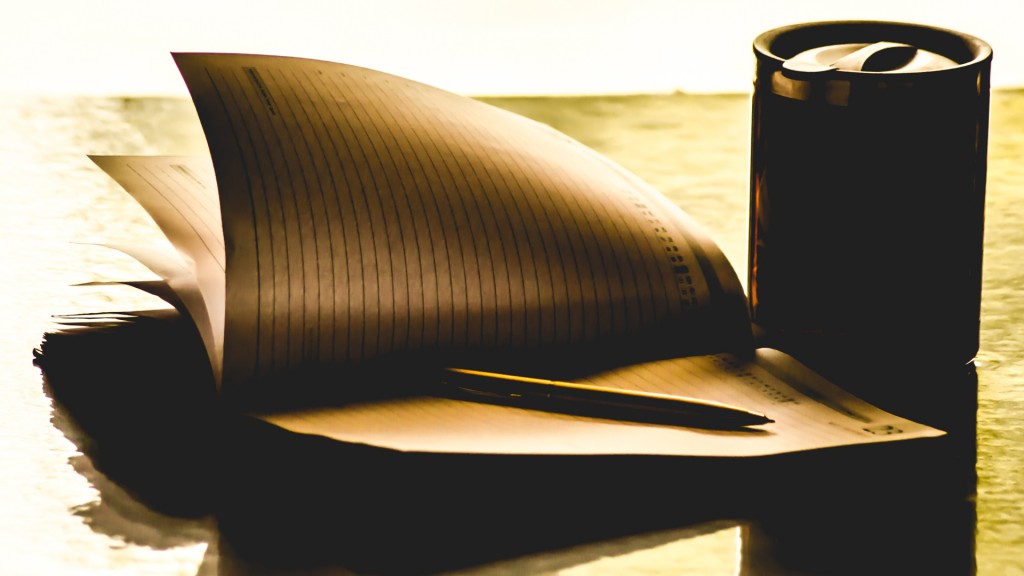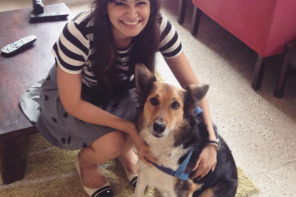Disclaimer: This is not a how-to article. The worst way to get about doing anything creative is by looking for a step-by-step guide to it. People usually ask “how to” for creative things instead of “what works”; restraining yourself to rules with creativity sounds something like “first draw the outline with a pencil, then shade, then paint with brushes” where frankly you can do whatever you want, however you want it. Art is not reporting facts; that’s best left to science.
In art, the grass is most welcome to be red on the other side.
And writing is no less artistic than painting or composing music, and everyone is free to explore with styles here. There are no real rules, not even guidelines, other than the absolute need for impeccable grammar. These pointers however, should help you write and see any article you begin, through to the end it deserves.
Starting Out
A blank screen or sheet of paper can be the most intimidating thing in the world to a creative person. Several articles go down the drain because sometimes, you find yourself incapable of penning down (or typing out) what was on your mind. But there are essentially three great ways to start an article, and you can build upon whichever makes the most sense.
From an overview.
One of the best ways to start an article, and to keep your words organized from the get-go, is to lay out an overview of your article. Write down a few words and pointers; write down all the things you want to talk about; or better yet, make sub-headings or list headings and then proceed to fill each one with paragraphs. It’s the best way to write something you know you have to write about, and there’s not much need (or room) to maneuver between it’s general layout.
From an inspiration.
If you’re writing a review about a great movie, watch it again, even if only a few scenes and bits; if you’re talking about a great restaurant, go back and look at the pictures you took of the place; if you’re writing about a person, have his work, quotes or research handy. What you’re writing about needs to be on your mind and in your subconscious; you can’t talk about your trip to Italy if the last twist in Game of Thrones is still on your mind (I know, right?).
Words follow thought, so think about the right things first.
From a dot on the sheet.
If you only have vague ideas about what you want to talk about, begin however you feel like; ignore all mistakes, formats, and language rules. Write down the first few things you want in your article, with no logic whatsoever — whatever you want written in your article, write it, figure out where to put it later. I started this article out with this very paragraph. Stories can be made around a point; the other way around doesn’t work that well.
Keep Going
After writing for a while, you will eventually lose your train of thought, or the feeling that you started out with may subside, or you may find yourself at a loss for words. This almost always happens after a few paragraphs. Never, at this point, decide to do something else. (That’s not the same thing as “don’t take a break” though.)
Stick to a train of thought.
It doesn’t matter where it’s going, or what you’re writing, at first; just keep writing, you’ll get somewhere with enough words. Later on, when you look up at the clock and see it’s 2 am, and then scroll up and see you’ve crossed over 2000 words, read it over, see what you’ve talked about, and what went where, and then decide what to write further (or omit).
Your work can’t be perfected before it’s done.
Stick to one story and one point.
A lot of times, especially while following a train of thought, you may find yourself writing on a plane tangent to what you started with initially — if it’s something great, start another article, but don’t diverge your article midway to someplace else. Finish the story you began; and give that great other story you just thought of another, new article. An article immediately loses it’s purpose when it gives itself multiple objectives.
Don’t stick to the word limit.
Writing more is a great way to make sure your article is great; because when you have more content than you need, you can just remove what you feel like isn’t making that much sense later on. Also, if you keep writing without bothering much, you will certainly write things that are useless later on — or write something really great accidentally. It’s often worth it.
Make Sense
Once you’ve written enough, it’s time to start looking back and seeing what you’ve done, and sort it all out appropriately. You have the majority of what you want (or have) to talk about, so now it’s time to make it all readable.
Know how you started off.
A lot of articles seem to start off heading towards one conclusion and find themselves ending on another- don’t write one of those articles. If you started off an article with “how industries pollute rivers”, don’t end it on a for-the-greater-good type message of global warming (even if you think they make sense with each other and it’s an appropriate conclusion). The best end to the aforementioned article is “how can we prevent it”, or, if you’re not in the mood, “yeah it’s pretty bad for you.” But hey; no rules. If you can pull it off without making it look weird, awesome.
Start formatting and organizing.
Look for patterns, similar thoughts, a general flow of things that you can create.Fill in whatever’s missing, remove whatever is excessive (hey, don’t get attached, this is exactly why you wrote more than what you need to). Group things together into subheadings if you don’t have them already — it’s an excellent way to spot holes in the flow of your article. Compensate words wherever you have to; you may have over-elaborated one point but not given another the same weightage. and my favourite — use bold and italics wherever appropriate. Italics are an excellent way to emphasize something in your article, or for a quote/foreign word.
Link it up.
Use fillers, drama, and “and which is why”-type statements to link up everything in your article. Build one big story if you can; or split everything up into pointers, lists or whatever you want (or need to do), so that both you and the reader can keep their bearings about the article and know what you’re talking about at all times. Write/edit your intro and conclusion after knowing exactly what most of the article is about; use build-ups and wind-downs, a string of sentences or paragraphs that lead into (or away from) your main point, and grasp your reader’s attention accordingly. Drama always works! Unless you’re in reporting. No, actually it works there too.
Review differently
Writing should be one flow. But nobody said it’s important to post as soon as you write it. Blogs don’t belong to a twitter mentality; articles can, and should, wait as a draft for a day or two before going up. Why? Because you are your best critic, but you cannot look at your article from an objective point of view (a must for reviewing it) while you’re still in the same mindset as you were when you wrote it.
No one is the best judge of their own work.
P.S. if you send in your articles to any sort of moderator or editor, you’re most welcome to skip this and move on. But hey. Curiosity first.
Sleep on it.
This is one of the best ways to check back on your words — it’s worked wonders for me, every time. Usually I get into the writing mood late at night , and by the time everything I want written is written, sleep catches up. I think the satisfaction of reaching the end is a great sleep inducer — and hence, I sleep. The next morning (or afternoon, let’s be honest) is the best time to review what I wrote last night; because there’s nothing on your mind in the morning, other than possibly a good dream, and you can see it all very objectively and neutrally.
You have to see things differently to do something differently.
Bounce it off someone.
This is actually a really important thing to do, but surprisingly not a lot of people do it. Not only does a different eye automatically give you a different outlook, but it also gives you a reader’s perspective first-hand. It’s normal to get attached (and defensive) to your creation, which is why you may overlook some aspects even if you notice them repeatedly. An honest, third party critic will immediately lay down what they felt about the article, and that is what you will always need to improve. It doesn’t matter how often you do this, and with whom; do it with multiple people if you want. But do it. Other minds are naturally much better at working differently.
Hate the writer.
This is a funny way to look at it, but it works sometimes — especially if you’re writing on something that can be considered controversial, or just have a really annoying boss to report to. It’s also hard to do, trying to read between all of your (hopefully) good-natured lines and see where people can draw out the wrong meaning, disprove facts, and point out minute issues. But if you can, go for it. Reading negatively can sometimes work much better than reading neutrally — and obviously, you can’t really bounce off your article on someone who hates you, so it’s up to you (and also, entirely optional. Hey. Love yourself.)
The Final Look
You’re almost there, but once you’ve written it all, and it looks neatly organized and cohesive, read it again with these things in mind;
Grammar.
Look closely at each word and sentence, and get your grammar right. It doesn’t matter how good you are or how many articles you’ve written in your life, when you write down your mind it’s unlikely to be perfectly phrased from the get-go. You might have started a sentence with something, then backspaced and replaced a part with something else, but now the part is right and the whole sentence is wrong; you could’ve spelled a name incorrectly (something which those jagged red lines aren’t good at telling you) or you could’ve used “spelled” instead of “spelt” there and ignored it — like how I did earlier in this sentence. A strong, critical look at grammar is always a good thing. The last thing a writer should have in their article is a grammatical error.
See the Aesthetics.
Just detach yourself and see how it looks. Are things making sense with each other? Does that picture contradict the sentence right above it? That paragraph could be great but does it belong where it is? Is a sentence or paragraph too long? Did you format it all consistently, or did you start using something else by the end? Aesthetics of the article matter as much as the article itself.
Revisit The Title.
Does your article title still make sense with what you wrote about? The last thing you want is to have one kind of title and another kind of content — it annoys people really quickly, if they don’t find what they were hoping for, even if by a small measure. Your article titles should be short enough to state the point, long enough to not be vague or generic, and intriguing enough to make people click. Question-based article titles, in my experience, work really well.
Make it rock solid.
If you’re stating facts or citing studies, prove it and link it. References are really good so that people know what facts did you base your arguments or opinions on — and even if that fact is proved wrong later and the entire article’s point falls, you still cannot be blamed because “Hey! It’s not my fault, it’s their’s.” (kidding, this is just a link to Facebook). Also, give credits where you must — sometimes it’s best to avoid pointless copyright issues.
And you’re done. There is a certain satisfaction in completing an article, like the last notes of a beautiful piece of music. But in reality, it’s the journey that matters more with creativity. So keep writing; no matter what it feels like throughout, the end is worth it.
















